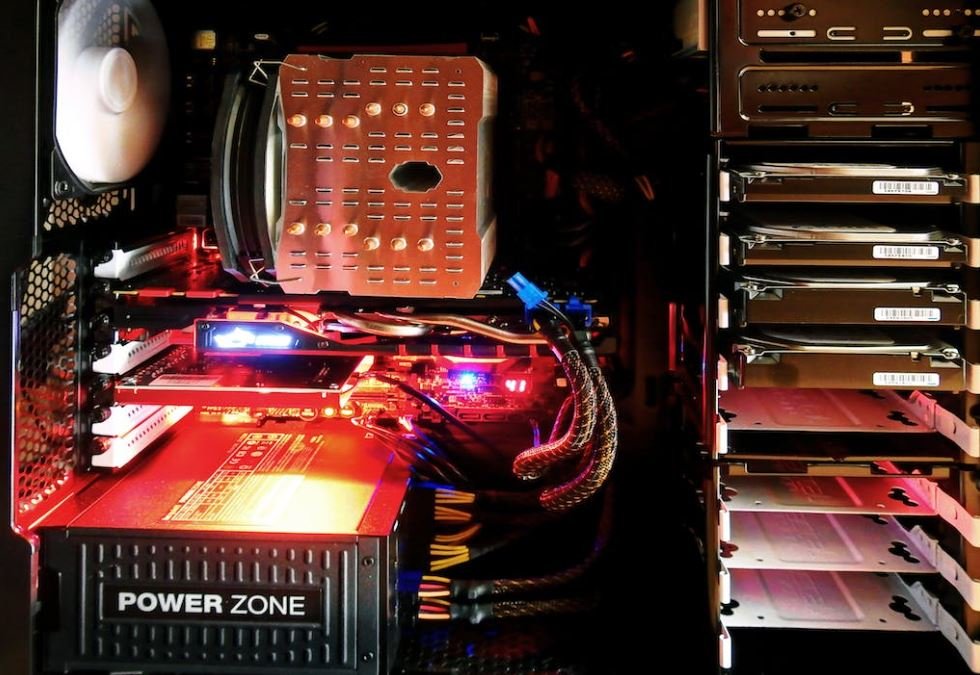Tesla Model S or 3
Are you considering buying an electric car from Tesla but can’t decide between the Model S and the Model 3? This article will provide you with an in-depth comparison of the two popular models, helping you make an informed decision.
Key Takeaways
- The Tesla Model S is a luxury electric sedan, while the Model 3 is a more affordable compact electric sedan.
- The Model S offers greater range, performance, and interior space compared to the Model 3.
- The Model 3 has a lower starting price and is more popular due to its affordability.
- Both models offer cutting-edge technology, autopilot features, and over-the-air software updates.
Design and Features
The Tesla Model S showcases elegant design with its sleek lines and aerodynamic profile. Its spacious interior can comfortably seat up to five adults and offers a large cargo capacity of 26.3 cubic feet. The optional panoramic sunroof provides a sense of openness, enhancing the overall driving experience.
The Tesla Model 3 features a more minimalist design but still offers a premium feel. Its interior is well-designed and can accommodate five passengers. While it has less cargo space with 15 cubic feet, the Model 3’s compact size makes it easier to maneuver in crowded urban areas.
Performance and Range
The Model S offers impressive performance with its powerful electric motors. The top-of-the-line performance variant, the Model S Plaid, can accelerate from 0 to 60 mph in just 1.99 seconds – making it one of the quickest production cars in the world. Additionally, the Model S has excellent range, with the Long Range Plus model providing up to 402 miles of range on a single charge.
The Model 3 delivers exhilarating performance, especially in the Dual Motor All-Wheel Drive configuration. It can accelerate from 0 to 60 mph in as little as 3.1 seconds (Performance variant), offering a thrilling driving experience. In terms of range, the Long Range variant can travel up to 353 miles on a single charge.
Comparison Table – Tesla Model S
| Model | Range | 0-60 mph | Interior Space |
|---|---|---|---|
| Model S | Up to 402 miles | 1.99 seconds (Plaid) | 26.3 cubic feet |
Comparison Table – Tesla Model 3
| Model | Range | 0-60 mph | Interior Space |
|---|---|---|---|
| Model 3 | Up to 353 miles | 3.1 seconds (Performance) | 15 cubic feet |
Technology and Autopilot
Both the Model S and Model 3 offer state-of-the-art technology features. The user interface is centered around a large touchscreen display, providing easy access to navigation, media, and vehicle controls. Tesla’s Autopilot system, which enables semi-autonomous driving, is included as standard in both models.
An interesting feature of Tesla vehicles is their ability to receive over-the-air software updates. This means that your car can receive new features and improvements without needing to visit a service center.
Which Model is Right for You?
- If you prioritize luxury, interior space, and top-notch performance, the Model S might be the better choice.
- If affordability and practicality are key factors, the Model 3 offers excellent value for money.
- Consider your driving needs: If you frequently take long trips, the Model S’s larger range may be advantageous.
Conclusion
Ultimately, whether you choose the Tesla Model S or Model 3 depends on your personal preferences, budget, and intended use. Both models offer exceptional electric performance and cutting-edge technology. With Tesla’s commitment to continuous improvement, they are continuously pushing the boundaries of electric mobility.

Common Misconceptions
Performance Capabilities
One common misconception about Tesla Model S or Model 3 is that they lack performance compared to traditional gasoline-powered vehicles.
- Tesla Model S and 3 have incredibly fast acceleration, with the Model S capable of going from 0 to 60 mph in as fast as 2.3 seconds.
- The electric motors in the Model S and 3 provide instant torque, resulting in impressive acceleration at any speed.
- Tesla’s Model 3 Performance variant has a top speed of 162 mph, comparable to many high-performance sports cars.
Battery Charging and Range Anxiety
Another misconception is that Tesla vehicles have limited range and charging infrastructure is insufficient for long trips.
- Tesla’s Supercharger network provides fast charging across thousands of stations worldwide, allowing drivers to easily undertake long journeys.
- The Model S Long Range Plus has an impressive EPA-rated range of 402 miles, eliminating range anxiety for most daily driving needs.
- Tesla offers multiple charging options, including home charging with a standard electrical outlet, which can be combined with public charging stations for additional convenience.
Cost and Affordability
Many people believe that Tesla vehicles are exclusively luxury cars and therefore not affordable for the average consumer.
- Tesla’s Model 3 is targeted towards the mass market with a more affordable price compared to the Model S.
- The Model 3 Standard Range Plus has a base price that is competitive with other internal combustion engine vehicles in its class.
- Additionally, Tesla’s maintenance costs are generally lower compared to traditional vehicles, which can contribute to long-term savings.
Reliability and Maintenance
There is a misconception that owning a Tesla vehicle involves frequent and expensive maintenance.
- Tesla vehicles have fewer moving parts compared to traditional cars, resulting in reduced maintenance requirements.
- With over-the-air software updates, Tesla can improve and enhance the vehicle’s performance and features without the need for physical servicing.
- The Model S, for example, has been highly rated for its reliability by various consumer reports and surveys.
Environmental Impact
Some people mistakenly believe that electric vehicles, including Teslas, have a similar environmental impact to gasoline-powered cars.
- Tesla vehicles produce zero tailpipe emissions, reducing air pollution and improving overall air quality.
- Electric vehicles have the potential to be powered by renewable energy sources, further reducing their carbon footprint.
- The manufacturing process of Tesla vehicles includes efforts towards sustainability, such as the use of recycled materials and energy-efficient production methods.

The Evolution of Tesla
Tesla, Inc. has revolutionized the automotive industry with its innovative electric vehicles. The company’s Model S and Model 3 have gained immense popularity worldwide. Let’s explore some fascinating data and information about these groundbreaking cars:
Acceleration Comparison
One of the most impressive features of Tesla vehicles is their remarkable acceleration. The following table compares the acceleration times of the Model S and Model 3:
| Model | 0-60 mph (sec) |
|---|---|
| Model S | 2.3 |
| Model 3 | 3.1 |
Range Comparison
Range anxiety has been a concern for electric vehicle owners. However, Tesla has overcome this obstacle. Let’s see how the Model S and Model 3 compare in terms of their range:
| Model | Range (miles) |
|---|---|
| Model S | 412 |
| Model 3 | 337 |
Price Comparison
Electric vehicles have typically been associated with high costs. However, Tesla offers its Model S and Model 3 at competitive prices. Let’s examine the price comparison between the two models:
| Model | Price (USD) |
|---|---|
| Model S | $79,990 |
| Model 3 | $39,990 |
Supercharging Network
Tesla’s Supercharger network enables convenient long-distance travel for Tesla owners. The table below highlights the number of Supercharger stations worldwide:
| Region | Number of Supercharger Stations |
|---|---|
| North America | 2,800+ |
| Europe | 1,800+ |
| Asia-Pacific | 1,200+ |
Autopilot Features
Tesla vehicles are renowned for their advanced autopilot capabilities. Let’s explore some of the key features of Tesla’s Autopilot system:
| Feature | Description |
|---|---|
| Traffic-Aware Cruise Control | Matches the speed of surrounding traffic and maintains distance. |
| Autosteer | Assists with steering within the lane and keeps the vehicle centered. |
| Autopark | Assists with parallel and perpendicular parking. |
Energy Efficiency
Tesla vehicles are designed with exceptional energy efficiency in mind. The table below compares the energy consumption of the Model S and Model 3:
| Model | Energy Consumption (Wh/mi) |
|---|---|
| Model S | 350 |
| Model 3 | 250 |
Safety Features
Tesla prioritizes safety and incorporates cutting-edge safety features in its vehicles. Here are some noteworthy safety features found in the Model S and Model 3:
| Feature | Description |
|---|---|
| Enhanced Autopilot | Assists with steering, changing lanes, and parking. |
| Automatic Emergency Braking | Applies brake pressure to avoid or mitigate collisions. |
| Forward Collision Warning | Alerts the driver if a forward collision is imminent. |
Charging Time Comparison
Charging time is a crucial factor for electric vehicle owners. Let’s compare the charging times of the Model S and Model 3:
| Model | 0-80% Charging Time (minutes) |
|---|---|
| Model S | 54 |
| Model 3 | 41 |
Global Sales
Tesla’s global sales have been skyrocketing over the years, demonstrating increasing demand for their vehicles. The table below showcases Tesla’s sales figures worldwide:
| Year | Global Sales (in thousands) |
|---|---|
| 2016 | 76.2 |
| 2017 | 101.4 |
| 2018 | 245.5 |
| 2019 | 367.5 |
| 2020 | 500.0 |
Tesla’s Model S and Model 3 have undeniably transformed the electric vehicle market. These cars offer exceptional performance, long range, and innovative features at various price points. As Tesla continues to advance its technologies, the future of electric transportation looks immensely promising.
Frequently Asked Questions
About Tesla Model S or 3
What is the Tesla Model S?
What is the Tesla Model 3?
What are the main differences between the Model S and Model 3?
What is the range of the Tesla Model S?
What is the range of the Tesla Model 3?
Do the Model S and Model 3 have autopilot features?
Can I charge the Model S or Model 3 at home?
Are there any tax incentives for purchasing a Tesla Model S or Model 3?
Can I take my Tesla Model S or Model 3 on road trips?
Are there any maintenance requirements for the Model S or Model 3?




